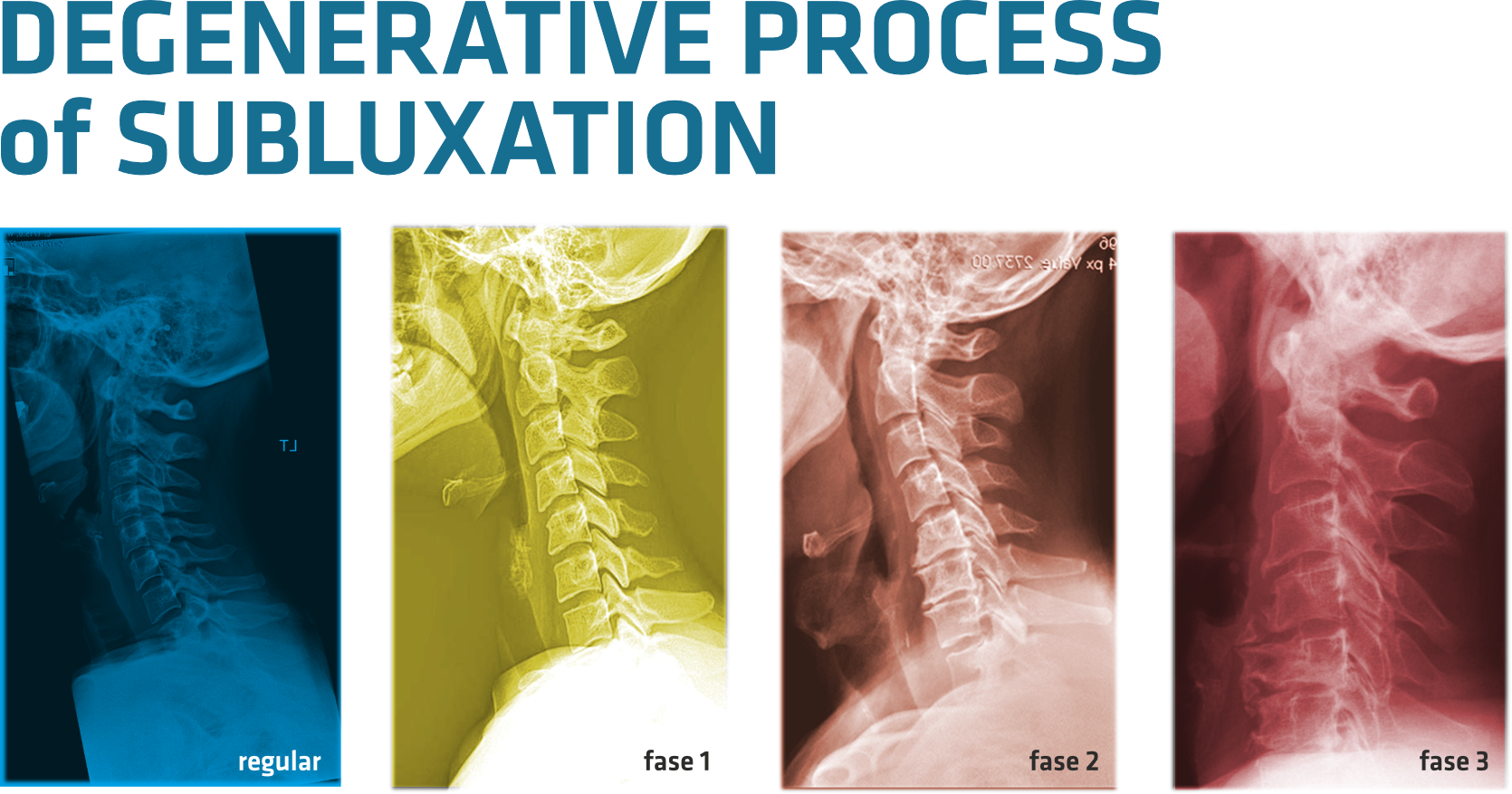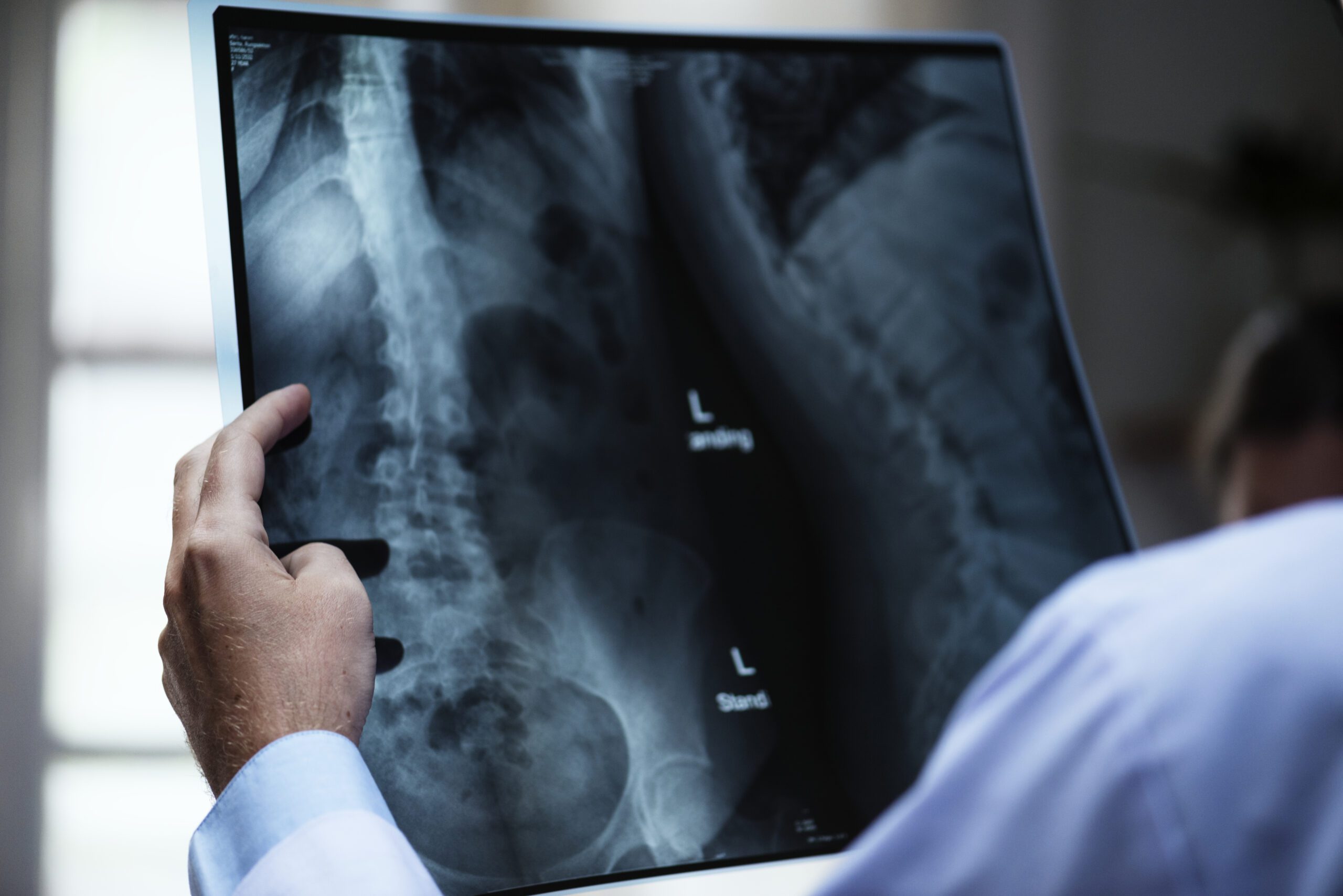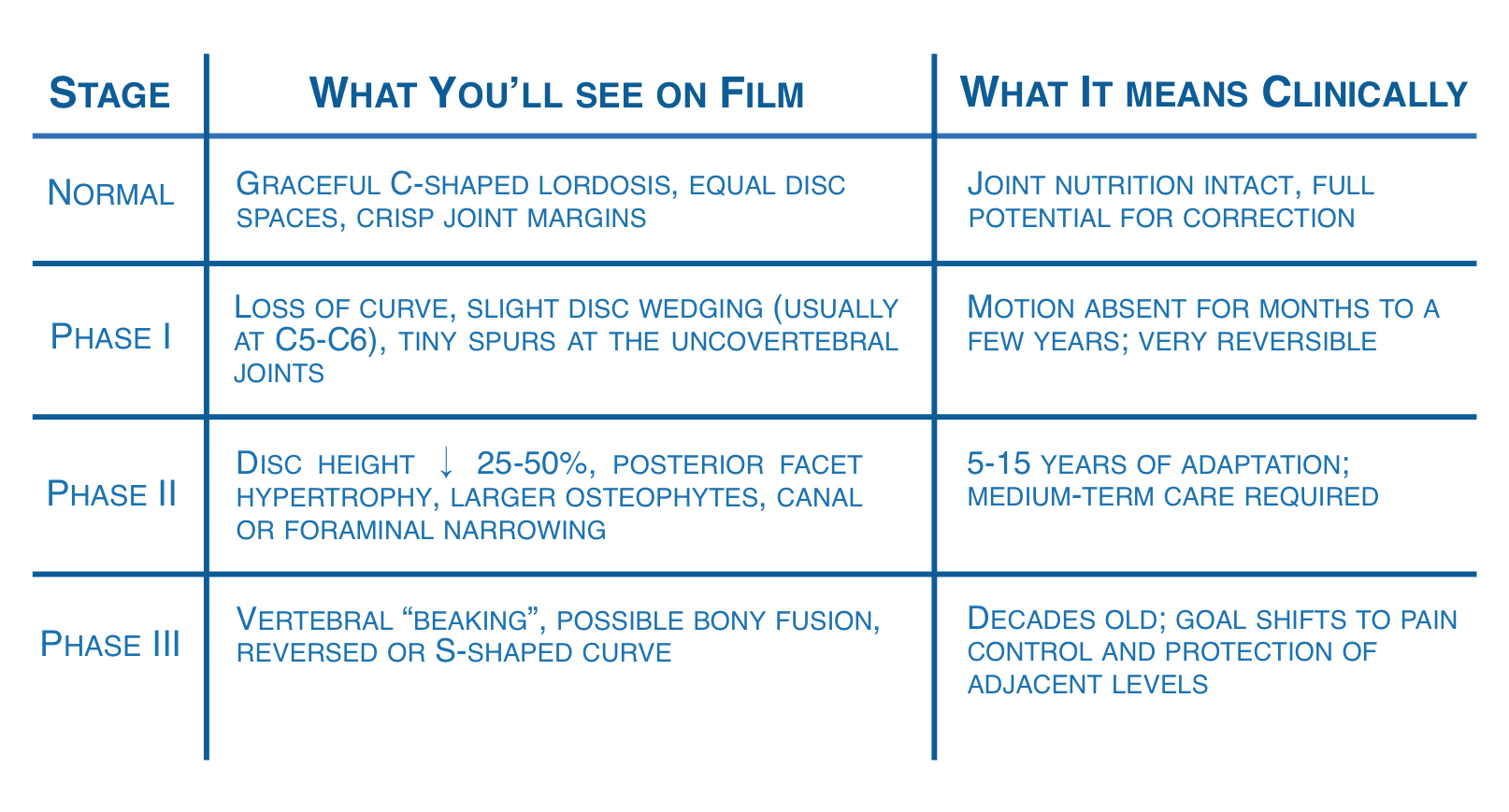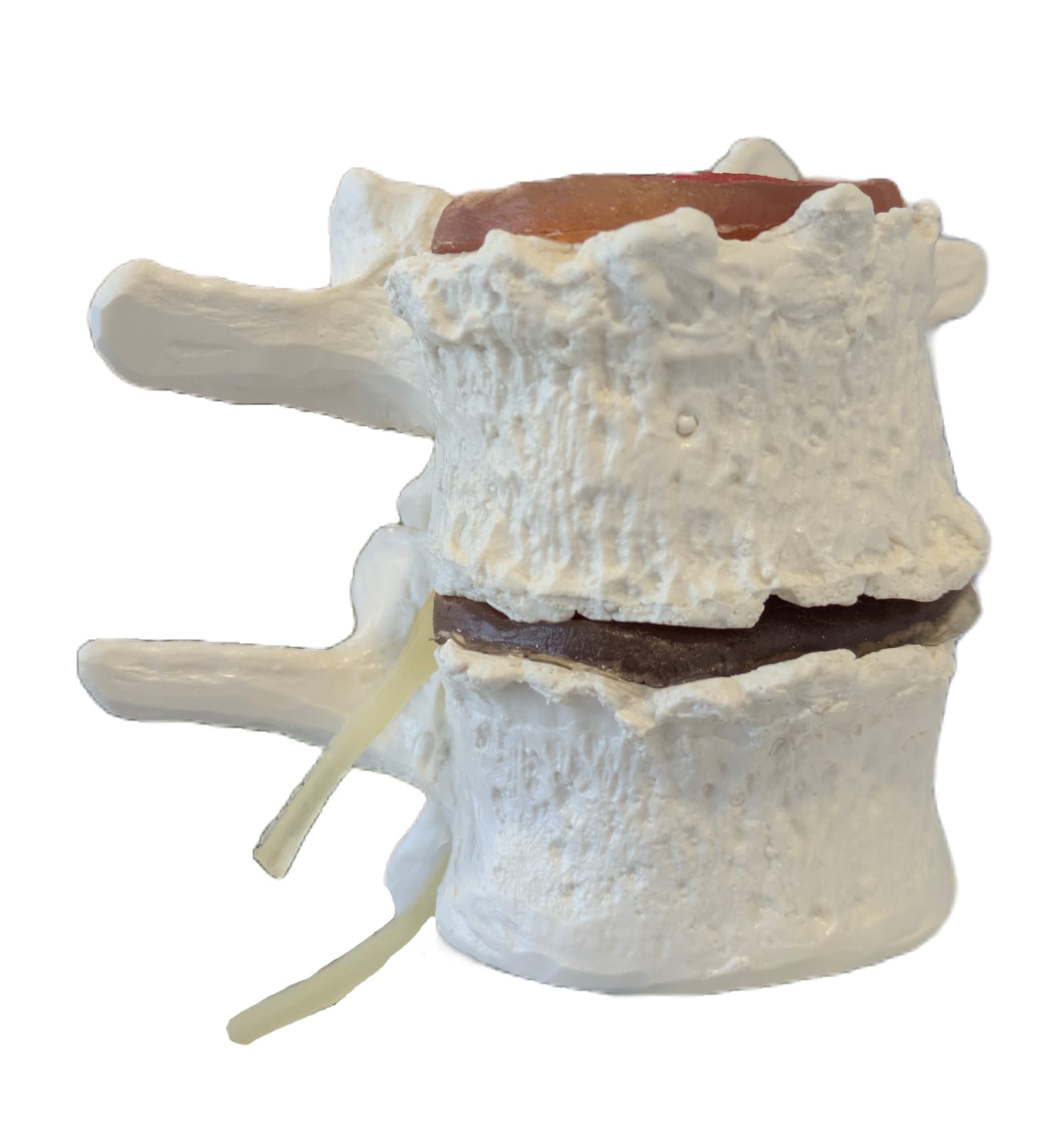Motion Is Medicine for Vertebral Health


Modern life packs commutes, screens, and soft couches into nearly every waking hour. For the spine, that prolonged stillness is more than an ergonomic nuisance — it is the spark that ignites vertebral subluxation complex degeneration (VSCD).
Each spinal segment is engineered to glide, rock, and spring with every breath and step. When a joint loses that movement — whether from a minor injury, poor posture, or simply sitting too long — circulation inside the disc and facet joints slows dramatically. Nutrient-rich fluid no longer pumps in, waste is not pumped out, and the body begins reinforcing the stuck segment with extra bone. Left uncorrected, that protective response progresses from soft-tissue stiffness to the bony remodeling we label degeneration.


Why X-rays Matter
Degenerative change creeps along so quietly that patients often have no clue anything is wrong until a nerve becomes pinched or a disc finally fails. Plain-film radiography therefore becomes a time-lapse record, letting chiropractors see not only where a subluxation sits but also how long it has been there. In the image you’ll find below we move from a perfectly healthy spine through three recognizable phases of VSCD in the cervical spine (neck).






Reading the Spine’s Biography
Bone remodels slowly — roughly 1 mm of spur growth per year — so a 4 mm anterior osteophyte tells us a subluxation has likely simmered for at least four years. Similarly, every 10 % loss of disc height approximates a decade of dehydration. By overlaying those radiographic clues on a patient’s age and symptom history we can forecast healing potential:
∘ Phase I: Soft tissues are still pliable. Specific adjustments plus daily mobility drills often restore near-normal biomechanics in weeks to months.
∘ Phase II: The disc has thinned and ligaments have shortened. Expect 1-2 years of targeted adjustments, traction, and stabilizing exercise.
∘ Phase III: Bony fusion can’t be undone, but surrounding segments can be mobilized to slow adjacent-level degeneration. Life-quality improvements are real, yet ongoing maintenance is non-negotiable.
“But I Feel Fine…”
Cartilage contains few pain receptors, and spinal nerves usually tolerate mild pressure for years before becoming symptomatic. Population studies show that up to 40 % of adults over 40 already have moderate osteoarthritic change on X-ray — most with zero neck or back pain. Pain, in other words, is a late-stage alarm. Waiting for it means you’ve likely advanced to Phase II or III, where correction is harder, costlier, and slower.
Motion Is Medicine — Start Early
The flip side is encouraging: VSCD is largely preventable. Daily movement — brisk walking, spinal mobility drills, frequent micro-breaks at the desk — keeps the “disc pump” working. Periodic chiropractic check-ups detect the subtle loss of segmental motion long before the body is forced to calcify the joint. If your films resemble the “Normal” example, celebrate and keep moving. If they hint at Phase I or II change, timely corrective care can still restore healthy function and give discs a chance to re-hydrate.


Key Take-aways for Your Patients and Readers
1. Immobility is the #1 driver of spinal degeneration.
2. X-ray analysis reveals both location and age of a subluxation, guiding prognosis and care plans.
3. Degeneration is usually silent until advanced, so absence of pain is a poor health metric.
4. Early detection and regular motion preserve quality of life — far easier than reversing decades of bony remodeling.
In short, immobility is the match that lights the fuse of vertebral subluxation degeneration, but purposeful movement — and informed chiropractic care — can snuff it out long before the flame reaches the powder keg. Don’t wait for pain to be your first symptom; let a quick spinal check-up be your early-warning system and keep your future self moving freely.
